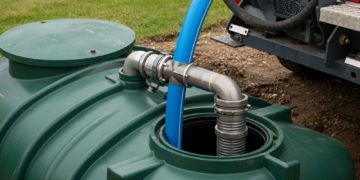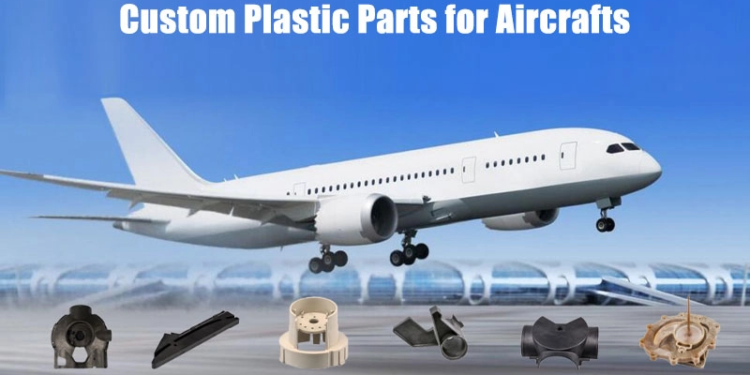When you’re developing components for aerospace, a single defect in a molded part can compromise safety, delay certification, or ground your entire program.
As someone who’s worked on aerospace tooling projects, I can tell you: the right partner isn’t just capable—they’re proactive. They flag design issues early, understand aerospace regulations, and support rapid prototyping when time matters.
This guide will help you identify the key criteria—technical capability, compliance, engineering support, and delivery reliability—so you can choose a molding partner that gets it right the first time.
Meeting Aerospace Standards and Material Requirements
In aerospace injection molding, general capability isn’t enough—you need a partner who works within strict regulatory and material frameworks every day.
Start by checking certifications. At a minimum, your molding partner should be AS9100 certified. This tells you they follow the quality standards specific to aerospace manufacturing. If your parts are subject to FAA or EASA oversight, you’ll also want a partner who understands traceability and documentation requirements. For defense projects, ITAR compliance may be required. Ask directly: “Can you support AS9100 and ITAR workflows with full documentation?”
Next, evaluate their material experience. Not all shops can handle aerospace-grade thermoplastics. Materials like PEEK, Ultem (PEI), PPS, or carbon-fiber filled resins require precise process control—from drying and temperature management to mold design for shrinkage and flow behavior. If your supplier has only run ABS or nylon, they’re not ready for aerospace.
Here’s a quick checklist to ask your supplier:
- Have you molded high-temperature engineering resins like PEEK or Ultem?
- Do you understand resin lot traceability and shelf-life requirements?
- Can you provide full material certs and MTRs on request?
Tight tolerances and insert molding experience are also critical. Aerospace parts often combine plastic with metal or require post-molding assembly. A qualified shop should show examples of molding with:
- Tolerances within ±0.025 mm
- Metal or ceramic inserts
- Overmolding onto complex structures
Finally, don’t overlook lifecycle support. Aerospace molds are long-term assets. You need a team that not only builds molds, but also supports:
- Early-stage DFM review
- Tooling maintenance and refurbishment
- Backup mold storage and revalidation
If they disappear after T1 samples, that’s not a partnership—it’s a transaction. Look for a team that sticks with you through the full product lifecycle.
Accelerating Validation Through Prototyping
When you’re developing injection molded parts for aerospace, getting it right early matters. That’s where rapid prototyping becomes a strategic advantage, not just a convenience.
You can’t afford late surprises. Early prototypes help you validate fit, thermal behavior, and mechanical performance before committing to full tooling. Whether you’re designing a housing for avionics or a connector for cabin systems, a fast prototype gives you data you can act on.
Here’s what a good supplier should offer:
- CNC-machined or 3D-printed prototypes for fast design feedback
- Bridge tooling—a short-run mold for making real parts from production-grade resin
- Quick-turn injection molding for functional testing under actual conditions
You’ll need these options if you’re facing tight certification timelines or need to run tests for FST (Flame, Smoke, Toxicity), vibration, or pressure cycling. A supplier who can’t support this phase may slow you down later.
Let me give you an example. We once worked with a team developing an avionics enclosure. On-screen, the vent geometry looked fine. But when we ran the first bridge mold and built prototypes, we found the airflow was restricted. Because the mold was aluminum and designed for fast revisions, we re-machined the core, produced new parts, and cut two weeks off the redesign loop.
What you should ask a potential partner:
- Can you support both soft tooling and production tooling in-house?
- What’s your lead time for 3D prints, CNC samples, and bridge molds?
- Do you provide material equivalents for prototype testing?
Prototyping isn’t a luxury in aerospace—it’s part of risk management. And the right molding partner knows how to build that into your project from day one.
Getting Materials and Process Control Right in Aerospace
In aerospace, material choice isn’t just about performance—it’s about compliance and consistency. You’re not just selecting a plastic; you’re managing thermal loads, flammability ratings, chemical resistance, and traceability, all at once.
You’ll need more than just availability. Your injection molding partner must be deeply familiar with high-performance resins like PEEK, PEI (Ultem), PPS, and glass- or carbon-filled compounds. Each of these has unique handling requirements—from drying temperatures to gate design.
Here’s what to check:
- Can they provide material certifications? You should expect UL 94 V-0 ratings, material traceability records, and documentation for shelf life and storage conditions.
- Do they understand aerospace-grade standards? That includes not just resin properties, but also requirements around outgassing, radiation resistance, and chemical exposure.
Process control is where things often go wrong. Many molding defects—like voids, incomplete crystallization, or resin degradation—come from poor control over temperature, moisture, or shear.
Ask directly:
- How do they manage and log resin drying?
- Do they use closed-loop mold temperature controllers?
- Is shear rate monitored during injection for shear-sensitive materials?
A qualified shop should provide traceable process data, not just verbal assurances. That means machine logs, batch control, and inspection data tied to each production lot.
Also ask if they’re experienced with failure modes specific to aerospace resins:
- Thermal degradation (often from excessive barrel heat or residence time)
- Splay and voids caused by residual moisture
- Incomplete crystallization affecting dimensional stability
If your molding partner isn’t ready to talk about these risks up front, they’re not ready for your project.
Ensuring Traceable, Repeatable, and Auditable Quality
You’re looking for a partner with real, working quality systems, not just paperwork. That means the processes behind the badge—how they handle first article inspection (FAI), batch validation, and final part release.
Here’s what you should expect:
1. First Article Inspection (FAI) is Mandatory
A serious aerospace supplier will conduct a full FAI before ramp-up. That includes CMM-measured dimensions, material certs, and visual inspection—all tied to your 2D drawing or 3D model. If FAI is missing or vague, that’s a red flag.
2. Batch-Level Consistency Is Tracked
Ask about their in-process QC:
- Do they check parts per shift?
- Is statistical process control (SPC) used for critical dimensions?
- Can they provide GR&R (Gage Repeatability and Reproducibility) data for key features?
You need confidence that part #1000 is as good as part #1.
3. Documentation and Traceability
For every molded batch, you should be able to trace:
- The exact material lot used
- Machine parameters during production
- Final inspection records
If something fails in testing, you must be able to trace it back. That’s why true aerospace molders implement barcode systems or digital records—not handwritten notes or “we’ll check later.”
4. Proof, Not Promises
Before choosing a supplier, ask to see:
- Sample inspection reports from similar projects
- Their internal QC procedure flowcharts
- Photos or videos of their QC stations—CMMs, optical comparators, vision systems
A professional mold shop doesn’t wait for you to ask—they proactively show how quality is built into the process. If you’re hearing “we’ll check that later” or “don’t worry, we’ve done this before,” that’s not enough.
Keeping Projects on Track with Clear Communication
If you’re sourcing aerospace molds internationally—or even across time zones—poor communication isn’t just frustrating. It’s dangerous. Delays, mismatched expectations, and late design feedback can derail your entire program.
That’s why a good injection molding partner invests in communication just as much as they invest in equipment.
You Need a Single Point of Contact
You shouldn’t be chasing three people for updates. A professional mold shop assigns a project engineer who owns your timeline. They coordinate between design, machining, testing, and delivery—so you always know who to talk to when things shift.
Expect Real-Time Updates, Not Silence
A trustworthy partner doesn’t make you guess what’s happening. They share:
- Gantt charts with mold build milestones
- Weekly updates with photos or status summaries
- Immediate feedback on DFM, mold flow, and T1 trials
You should never have to ask, “Where are we now?”
Watch for These Warning Signs
When evaluating a partner, be cautious if:
- They respond to technical questions with “noted” or “okay”
- They miss promised update times or calls
- They avoid giving specifics on tooling stages
These are early signs of poor internal coordination. Once production starts, these gaps become expensive.
Good Partners Are Proactive, Not Reactive
The best mold manufacturers don’t wait for you to ask—they anticipate your questions. They’ll flag risks ahead of time, suggest timeline adjustments, and document progress clearly. This is especially crucial in aerospace, where late surprises can mean missed certification windows or grounded assemblies.
Strong communication and program control aren’t a bonus—they’re a requirement for aerospace tooling. Choose a supplier who treats it that way.
Getting the Mold on Time—And Making Sure It Works After Delivery
In aerospace programs, your timeline is tight. A missed mold delivery doesn’t just delay parts—it can stall an entire flight system test or certification cycle. That’s why logistics and follow-up support are just as critical as the mold itself.
Know Their Real Capacity
Some suppliers promise 4-week lead times, but if they’re juggling too many projects, your schedule slips. Ask:
- How many active tools are they managing now?
- How many moldmakers are assigned per project?
- Can they scale up for urgent or parallel mold builds?
You want a team that can actually deliver on the timeline—not just quote it.
Check the Trial Plan
Before final delivery, you need a clear T1 sampling schedule. Your partner should tell you:
- When the mold will run its first test
- Whether the trial will use the target material
- How quickly you’ll receive sample parts and inspection data
If they can’t commit to dates upfront, expect delays later.
What Happens After Shipment?
Aerospace molds often ship overseas. But what happens when you receive the tool?
- Will the supplier provide remote mold trial support or on-site debugging?
- Do they offer spare part kits, drawings, and setup instructions?
- Can they assist if something needs tuning after a few thousand shots?
The right supplier doesn’t disappear after the crate arrives—they help you get into stable production quickly.
Don’t Overlook Export Experience
If you’re sourcing from a mold factory in China or another overseas region, make sure they understand:
- Export crate specs (ISPM-15 compliance)
- Customs paperwork for tooling
- Air freight or sea freight scheduling
- Requirements for aerospace part classification
You don’t want your mold stuck at customs because the export documents were incomplete.
Are They Truly Ready for Aerospace Work? Use This Final Checklist
At this point, you’ve probably spoken with a few suppliers, reviewed some quotes, and maybe even seen sample tooling. But before you commit, step back and ask one final question:
Does this supplier really understand aerospace requirements—or are they just saying yes to win the job?
Here’s a checklist you can use to verify readiness before awarding the project:
1. They’ve Completed at Least 3 Aerospace Injection Molding Projects
You need more than theory. Ask for specific examples—part type, material used, quality requirements, and challenges solved.
2. They Bridge Rapid Tooling and Production
Can they deliver prototype molds fast, but also scale to production with consistent performance? This flexibility is key when you’re refining designs or working through certifications.
3. They Provide Both 2D and 3D DFM Feedback
Look for clear documentation—drawings marked up with draft, undercuts, and gate options, plus 3D flow simulation where needed. It shows their team is thinking ahead, not just quoting blindly.
4. They Accept and Respect NDAs
If a supplier hesitates to sign a Non-Disclosure Agreement, that’s a red flag. Aerospace programs are sensitive by nature—trust and confidentiality should be non-negotiable.
5. Their QC Process Is Auditable
They should walk you through:
- Incoming steel inspection
- In-process checks during machining
- Final inspection with CMM reports
- Mold trial documentation
If they can’t show you how quality is managed, assume it isn’t.
6. They’re Comfortable with Aerospace-Grade Materials
Can they handle high-temp resins like PEI, PPS, or PEEK? Can they process filled or flame-retardant grades with tight tolerances? Ask what materials they’ve molded recently.
Final Advice: Don’t Just Buy a Mold—Choose a Partner
A great aerospace mold maker doesn’t just hit dimensions—they help you avoid delays, meet compliance, and keep parts flying on schedule. Use this checklist, ask direct questions, and listen closely to how they respond.
You’re not just picking a vendor. You’re choosing someone to help you deliver precision, reliability, and safety—every time.











































































